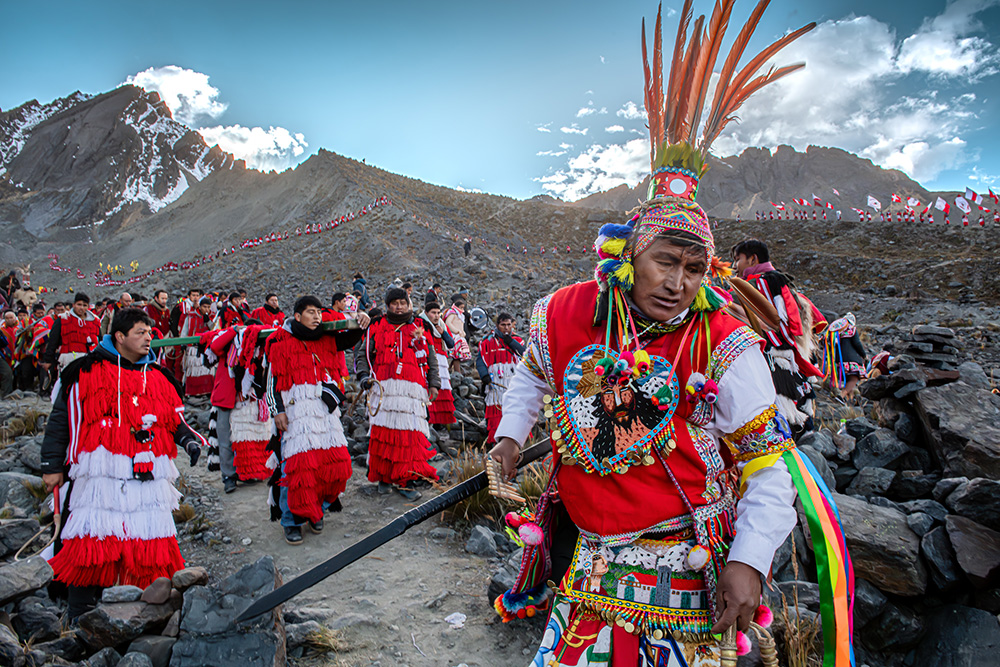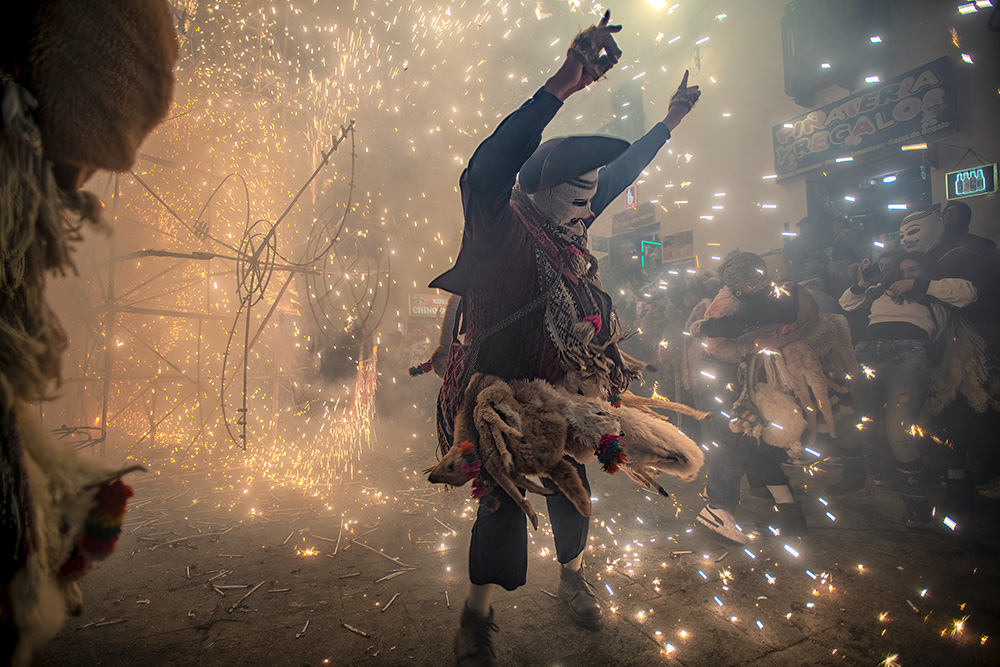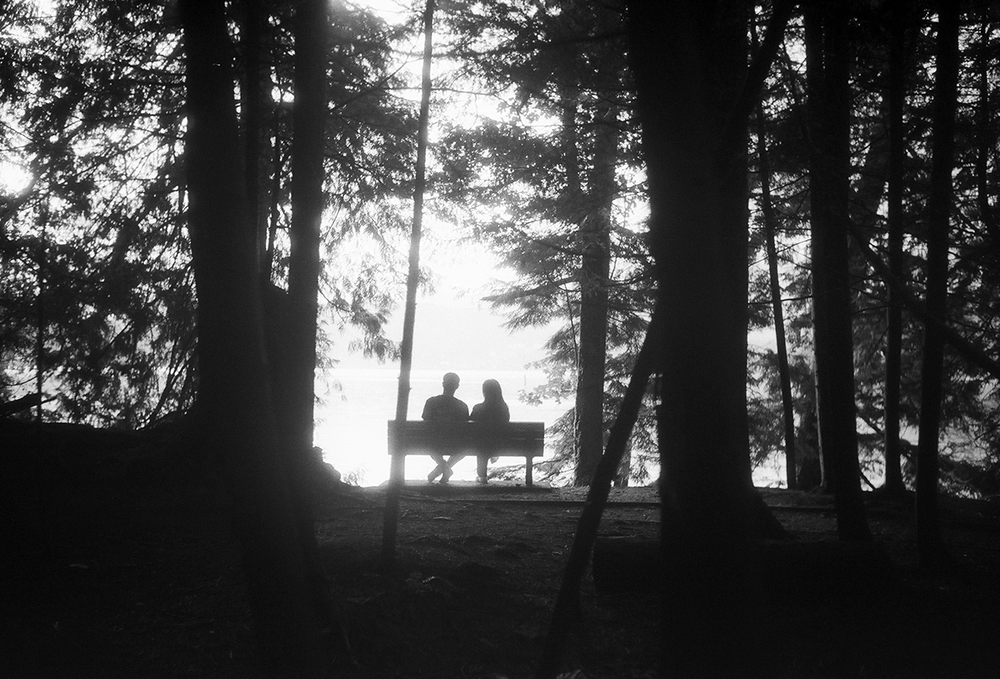Above Photo: A Paqo (High Andean Priest) leads the procession of the cross back down from the mountain at dawn. Copyright Michael Bednar Photography
As a follow up to my blog post from April “Photography with a purpose”, I wanted to interview Michael Bednar about his work and his most recent project. For the past two years, Michael has been living in Peru documenting the Indigenous Quechua people of the Andes. The project is focused on the unique culture of the Quechua, their intimate connection to the land, and their deep spirituality as they struggle to maintain their way of life in a rapidly changing world.
Michael’s work is testimony to the power of photography. How photography can be used to educate, document and hopefully raise awareness about the struggles of a people that we may not be aware of. In this age of AI and eroding trust in photography, it is heartening to see the work of a photographer that I would describe as honest and with purpose. I felt this interview might be a nice leadup to Michael’s presentation The Condor & The Bull at Gallery 811 on November 28th. This will be an opportunity to meet him and see more of his work. More details at the end of this interview.
This interview was originally intended to be podcast, and I hope to have the technical necessities and knowledge to make that happen for you in the near future.
A what age did you start taking pictures and what was your first Camera?
Unlike most of the photographers I know who were exposed to photography at a young age, I was 21 years old when I picked up a camera. It was a Canon Rebel. I was studying natural resource management and had begun to work in forestry. I first picked it up because I wanted to document all the beautiful places I was working. I also began travelling abroad at this point with my first trip being to Africa where I hitchhiked from South Africa to Tanzania. Then I got serious about photography and my stepfather gave me his Rolleiflex SL 35 bodies and lenses. I was hooked.
Did you study photography at a school or are you self-taught and were there any photographers that you drew inspiration from?
In those first years, I was more interested in nature photography and learned on my own. I drew inspiration and learned from Freeman Patterson and Courtney Milne. As I grew as a photographer, I became interested in people’s stories and began to explore storytelling and documentary photography. I would spend time in the streets and alleyways of Vancouver’s DTES meeting people to learn their stories and photographing their lives.
I knew I had a lot to learn and went back to school to study photography at The Western Academy of Photography in Victoria. It was a one-year program which was appealing to me as I wanted to get out in the world with my camera. In the end, I was selected to do a practicum at the Calgary Herald and then went on to work at the Medicine Hat News. It was at these daily newspapers that I learned to hone my technical skills.
I looked to the work of Steve McCurry for his intimate visual connections to people and William Albert Allard for his amazing visual storytelling. Then I was inspired by the work of Amy Toensing, John Stanmeyer, and Lynn Johnson. They were creating beautiful imagery that told stories which made me feel and made me more curious about the people and world around me.
How would you describe yourself? A photojournalist, a photo documentarian, a cultural advocate?
Over the years I’ve had to do a variety of different work to survive financially but at the root of who I am and what I do, I am a social and cultural documentary photographer. It is what drives me and keeps me going.
What would you say was the most pivotal point in your photography career?
In 2007 I was awarded People Photographer of the Year by the International Photography Awards for a personal project I did in Mongolia. I was nominated for the Lucie Award as International Photographer of the Year. Although I didn’t win the overall title, it opened up a lot of doors for me. It also made me realize that I couldn’t wait for people to give me the stories I wanted to do. I needed to find a way to do them on my own.
This has come full circle in a way as I prepare to head to Greece next month for the Lucie Awards and Foto Fest after winning several awards for my current project.
Your most current work focuses on indigenous Quechua peoples of the Andes. To borrow from your project statement:
“This project proposes to document and explore what it means to be Quechua today, what the modern threats are to the survival of their language and culture, and how their indomitable spirit – born of centuries of resistance and resilience – is being drawn upon to ensure they endure. It is a story that I felt strongly enough about to give up my home and life in Canada to tell and one that I am deeply committed to sharing with the world.”
How did you get started on this project?
Around the same time I had won the previously mentioned awards, I was working on a project teaching digital storytelling to First Nations youth in communities in British Columbia. The project aimed to connect the youth with their own unique culture. As part of that I visited Peru in 2008 to make connections between the participants with Indigenous youth from other cultures. That was my first exposure to the culture in Peru.
Then in 2014, I returned to Peru with the Vancouver-based non-profit organization Ascenta Foundation to document the medical work they were doing in a remote community of Cotabambas in the Andes Mountains. It was during this time that I grew interested in the culture of the Indigenous Quechua people. I was unable to stay and work on the story I wanted to tell but the seed was planted. It was a story that stayed with me and I continued to think about it over the following years. For a variety of reasons, I finally decided in 2022 that if I was going to do it, it had to be now and I made the leap.
What are the challenges you faced when photographing this project? Political, visas, environmental and emotional?
Phew… this is a big question. There have been different challenges at different times over the two years.
The project began with a baptism of fire. On the day I arrived in Cusco, President Pedro Castillo attempted to dissolve Congress and was arrested and jailed, accused of an attempted coup. It immediately set off protests and unrest across the country which would continue and grind the country to a halt for months. I documented the unrest, and travelled with and spoke with members from the communities of the Andes as they railed against systemic corruption, exploitation, and racism. My images accompanied stories for news agencies around the world and that was not well received by the authorities. I received death threats, was arrested, and faced deportation over those months. I was also trying to get my work visa so I could stay and continue on the project. It would eventually take me three attempts and over a year to have it granted to me.
Now as I continue the project I face the normal struggles that go with a project like this one. Learning about the issues that will help to tell the story and gain access and trust of the communities and people involved so they will share their stories with me and allow me to photograph them. The language barrier is always a challenge so I need to hire translators and guides. Travel can be difficult and takes a lot of time. Environmentally, staying in very basic, often uncomfortable places and eating what you are offered just comes with the territory. A project like this demands time, dedication, and resources all of which require money – the greatest challenge.
It can be emotionally taxing at times and requires tremendous self-reliance. It is necessary to be comfortable in your own skin and enjoy your own company and a lot of time is spent alone. Luckily I can make myself laugh! 🙂
Ultimately, what is your vision for the future of this project?
Ultimately, I envision this as a photo book. I will exhibit the project in galleries and photo festivals with accompanying talks about the work. I am working with a photo consultant to assist me in reaching these goals. I have begun to reach out to potential galleries and have already been invited to present the work at festivals once the project is completed.
If you weren’t a photographer, what would you have liked to do as a career? And what do you think you would have ended up doing as a job.
A question I have asked myself many times… As my greatest interests are entwined in culture (especially Indigenous) and the environment where the focus of my photography intersects, I would likely have been an ethnobotanist or anthropologist.
Presentation: The Condor & The Bull
In this presentation, Michael will share images and stories from the project for the first time at Gallery 881.
Gallery 881 is a lens-based art hub promoting the photographic arts in Vancouver through exhibitions, art sales, public events, and other visual art-based programming. Michael is excited to be partnering with Gallery 881 owner John Goldsmith to bring you this project for the first time in Vancouver.
A select series of small prints from the project will be made available at the presentation. These will be printed by PrintMaker Studio which is the full-service, fine art print studio and framing service available at Gallery 881.
A booklet of photos from the project is available to presentation attendees and can be purchased at a discounted price when purchased with their ticket. This booklet is not available to the general public.
November 28th, 2024 – 7 to 10 pm
Vancouver, BC – Gallery 881
Purchase tickets on Michael’s website – https://www.michaelbednar.com/events/event-two-hyzyj





